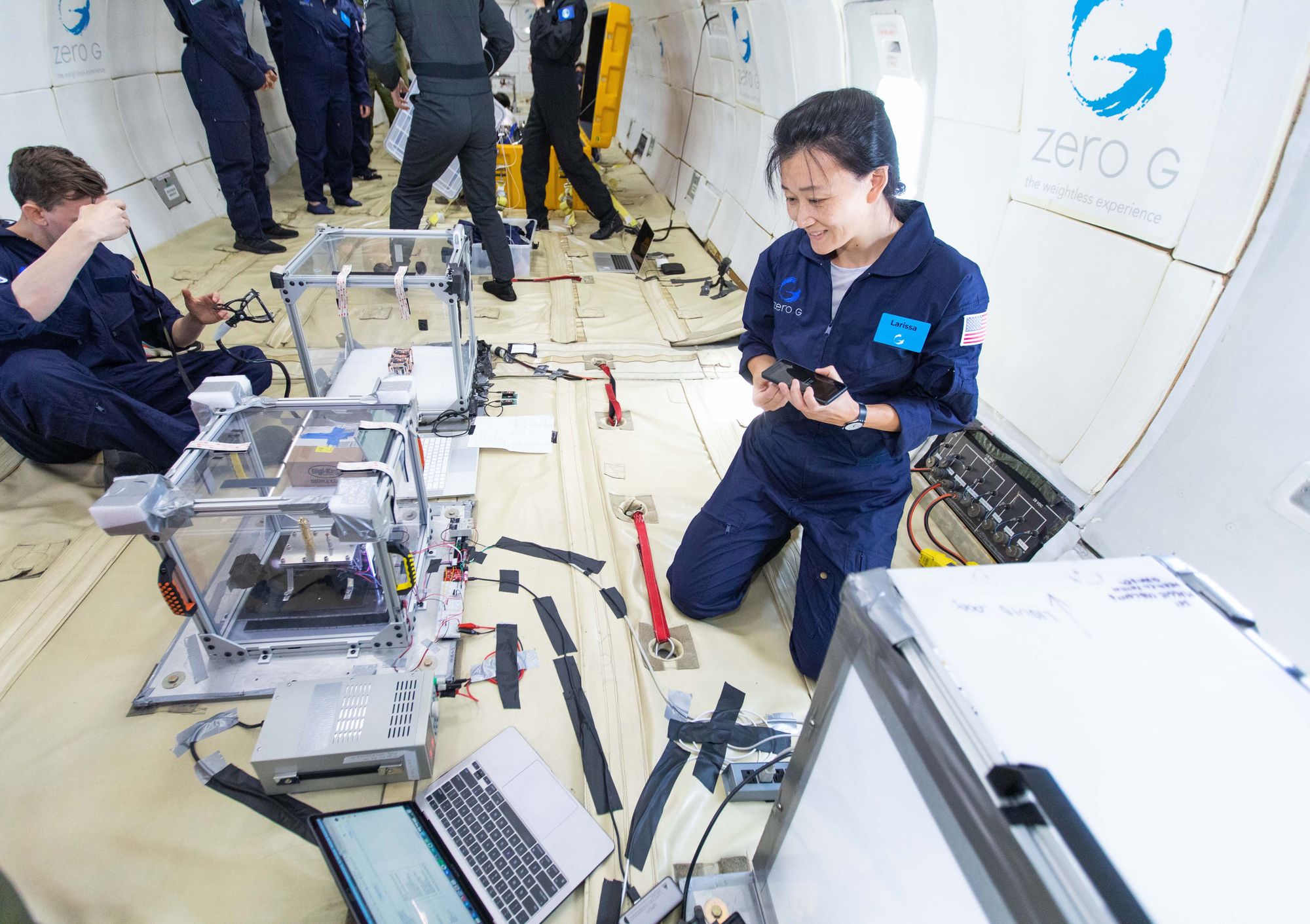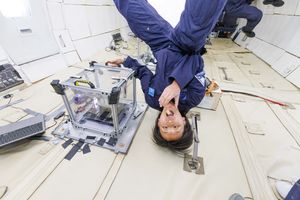If you managed to find yourself on the ISS, you would have a decently sizable menu of thermostabilized and rehydrateable foods to choose from. Astronaut food has advanced considerably in the decades since “Mercury astronauts had to endure bite-sized cubes, freeze-dried powders and semi-liquids packaged in aluminum tubes.” But if humans are to continue to explore outer space, going further and staying longer, reheating and rehydrating food will not be sufficient: Astronauts will need to cook.
Larissa Zhou is a food engineer who is defending her PhD research at Harvard in September, where she developed a technology for cooking food in a liquid medium in space (spoiler alert: it’s a device for boiling pasta). Previously, Larissa spent 5 years as the chief food scientist at Modernist Cuisine, with Nathan Myhrvold and Francisco Migoya, leading a team of researchers and chefs on technical R&D for the award-winning 5-volume book Modernist Bread.
Larissa is passionate about shifting the embedded values inherent in the space food paradigm and advocating for delicious and inclusive orbital foodways. Beyond her interest in food, she is a massage therapist and is training to become a mountain guide. Our conversation with Larissa covered the complex challenges of developing food for life in space along with a healthy dose of terrestrial fare. The conversation has been condensed and lightly edited.
lee wilkins: What volume of food does your device accommodate?
Larissa Zhou: It’s a prototype that holds ~100 mL of water, so not much. During my flights, I was cooking three pieces of rigatoni! Down the line, it can be scaled up. There are probably fluid-related physics that will need to be accounted for at say, 3-5 L.
Another possibility is to have multiple small pots, of course. What’s cool is that on Earth, the cooking range looks the way it does because of gravity. Each pot needs to lie flat on a different part of the range. But since my pot is a wedge that doesn’t care about up or down, you could have a radial arrangement.
Dave Cox: What do you do with the cooking water once it's done? Cleanup is such a huge part of cooking and that feels like so much more of a hurdle in space.
LZ: You’re getting at one of the arguably more complex aspects of designing life support hardware for space: How does the individual system interface with other life support systems? Further iterations of the prototype will need to account for that. For example, what about volatiles (not necessarily from boiling, but what if you were baking?) and steam? On Earth, I can open the window. I can’t do that in space. I initially thought it’d be nice to be able to smell food, but in a space habitat, the atmosphere revitalization system needs to be able to handle that. A colleague also pointed out that some crew might be nauseous and super sensitive to smells. So even if I wanted to smell a baking cookie, maybe my crew doesn’t.
For your specific question about water: I’m thinking that the pot will need to have a port for injecting and evacuating water. Maybe two ports, one port for clean water and another for moving greywater to the water filtration system. That means the water filtration system better be able to handle water fouled up by food bits. That leads me to think that my pot should be a sous vide system in future iterations, which doesn’t foul the cooking water.
Spencer Wright: Besides boiling it in water, what’s the most likely way that food might be cooked in space?
LZ: My work is about cooking via heating and hydrating, which is what starches need. Some foods don’t need to absorb water and can get away with heating alone. So we should continue to develop tech that does that. It can be an oven, microwaves (I’ve seen mention that Tiangong, the Chinese space station, has a microwave; the ISS doesn’t have one; it seems to be more of a shielding and power budget issue than anything else), grill, etc. I think an air fryer, which is really a bench-top super powerful convection oven, is a really good candidate for being adapted to space. It’s versatile and enclosed already. I’d add something on the inside to hold the food in place, but that’s probably about it. The bulk of the work would be in systems engineering - how to get it to fit within the existing web of life support systems and mass, volume, and power constraints.

Hillary Predko: I'm curious about your tests in microgravity! How were they arranged? Also, in the video, it looks like other people are testing prototypes – how did people get involved and what other devices did you think were cool?
Read the full story
The rest of this post is for paid members only. Sign up now to read the full post — and all of Scope of Work’s other paid posts.
Sign up now


